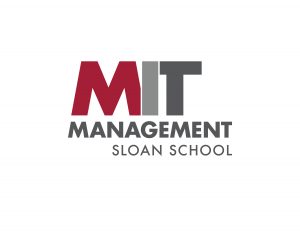A student was kind enough to review the master in finance program at MIT. I hope this helps any of you interested in the program.
1) Who would you recommend an MSF for and an MIT MSF for?
I would recommend a master in finance to three categories of individuals: those looking to learn more about finance (perhaps engineering undergrads), those looking to re-brand to get access to on campus recruiting, and those looking for a backup plan in case they can’t land a decent job coming out of undergrad. As for MIT specifically, I would recommend the program to those with a significant quantitative interest, or at least ability. The single required course of the program, 15.450 Analytics of Finance, is quite brutal – see this link for nearly full lecture notes and assignments to get a taste of it.
2) Pro’s and Con’s of the Program
Pro’s
Professors
Professors are absolutely phenomenal. Until coming here, I did not realize to what extent MIT really is the “birthplace of modern finance”, a frequently used phrase at Admit day that I wholeheartedly ignored. However, after spending some time here, my view has drastically changed – perhaps somewhat due to a newly formed bias though. The faculty list is available at here and notably includes:
John Cox (options research)
Leonid Kogan (asset pricing theorist)
Andrew Lo (author of econometrics books, “A Non-Random Walk Down Wall Street”, amongst others)
Bob Merton (Nobel prize, LTCM partner)
Stewart Meyers (corporate finance guy)
Steve Ross (invented APT, perhaps invented state price density framework)
Antoinette Schoar (leading Entrepreneurial Finance researcher)
Doug Breeden (inventor of Consumption CAPM, founder of Smith Breeden Associates)
Eric Rosenfeld (LTCM partner)
Jeff Shames (formed MFS CEO)
All of the above are teaching in the 2011-2012 year, creating an incredible opportunity to learn from both (a) the guys that invented the theory, and (b) the guys that made millions using it. Tough to match that.
Flexibility of the curriculum
There is only one required course, 15.450, as mentioned above (in addition to two introductory courses in the summer). The requirements are available at here, but roughly speaking as long as you take 5 finance classes at Sloan during your time here, you can do anything you want with your other credits. Many took the opportunity to take non-Sloan classes (Math, CS, other MIT-ish subjects), others took “soft” Sloan courses in Sales, Marketing, Entrepreneurship, etc, some took HBS courses (can register for 2 per term), etc.
The program is what you make of it, but you have to survive 15.450. At the link for the curriculum, there are many rules, which make me think of something an undergrad professor from MIT told me – “MIT is like a big communist country – there are tons of rules, but everyone knows how to get around them.” And getting around the rules usually involves just asking the program directors – they are very flexible and supportive.
Grading
To graduate, you need a B average, but the curve works in your favor. 40% of each class get As, the next 50% get Bs, and the bottom 10% (in theory) get Cs. So most students were not worried about grades, which allowed them to focus on areas they are most interested in during their studies. Also, in Sloan classes which have a quantitative lean, the MBA students “dilute” the curve since their math level is usually much below that of MFins. (though the opposite may be true in “softer” Sloan classes)
On Campus Recruiting
The Career Development Office (CDO) is very helpful and responsive.
Con’s
Cost
Admittedly expensive, unless sponsored. Scholarships are very rare.
No internship as part of the program. There has been discussion for a long time about incorporating one, but there simply does not appear to be a good way of doing so. Extending the program to be 1.5 years (so July to December) has been considered, but is problematic.
First of all, the extension would cost ~$30k for an extra semester due to general MIT rules. If the extension is optional to students, then the only ones that would take it would be those that don’t find a job by May/June, leading to some negative selection bias.
It would also require students to hedge by recruiting simultaneously for full time jobs and internships. If it is mandatory, then the price tag goes up, and all students then graduate in December, not a good hiring time. So problems any way you look at it – but the issue is actively being discussed.
3) Misc
Advice to applicants:
In my perception, the admission process is very numbers driven, unlike most typical MBA processes. it seems that extracurricular activities are not that high on the list of preferences – we simply want the brightest individuals. One thing that seems to be important is to demonstrate that you are employable – as any program, job statistics are very important to us (since that’s largely how we attract talent) and we want to be able to find you a job after graduation. I believe the Career Development Office is actively involved in the admission process, so if they don’t think they can find you a job, you are probably not getting in. Good luck to all.
Here is a link to the MIT Master in Finance program



